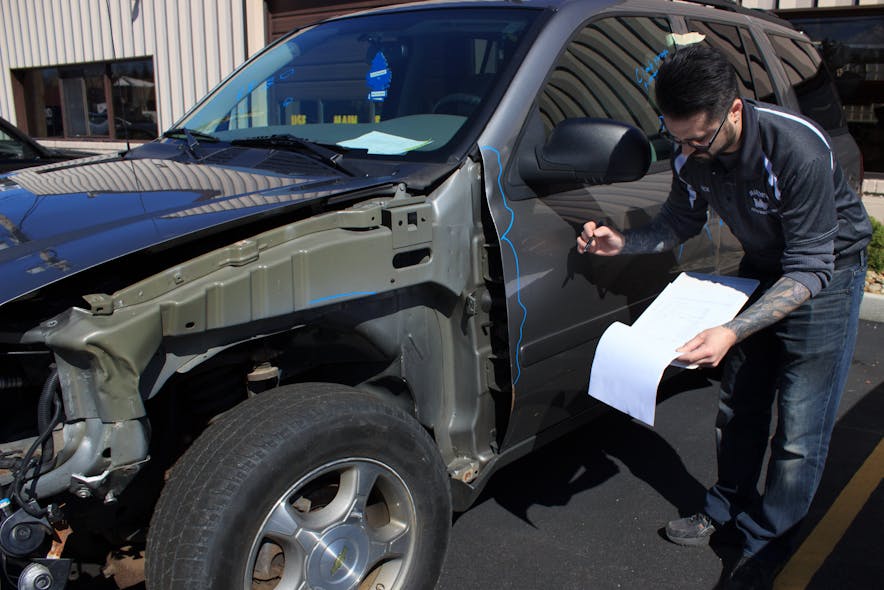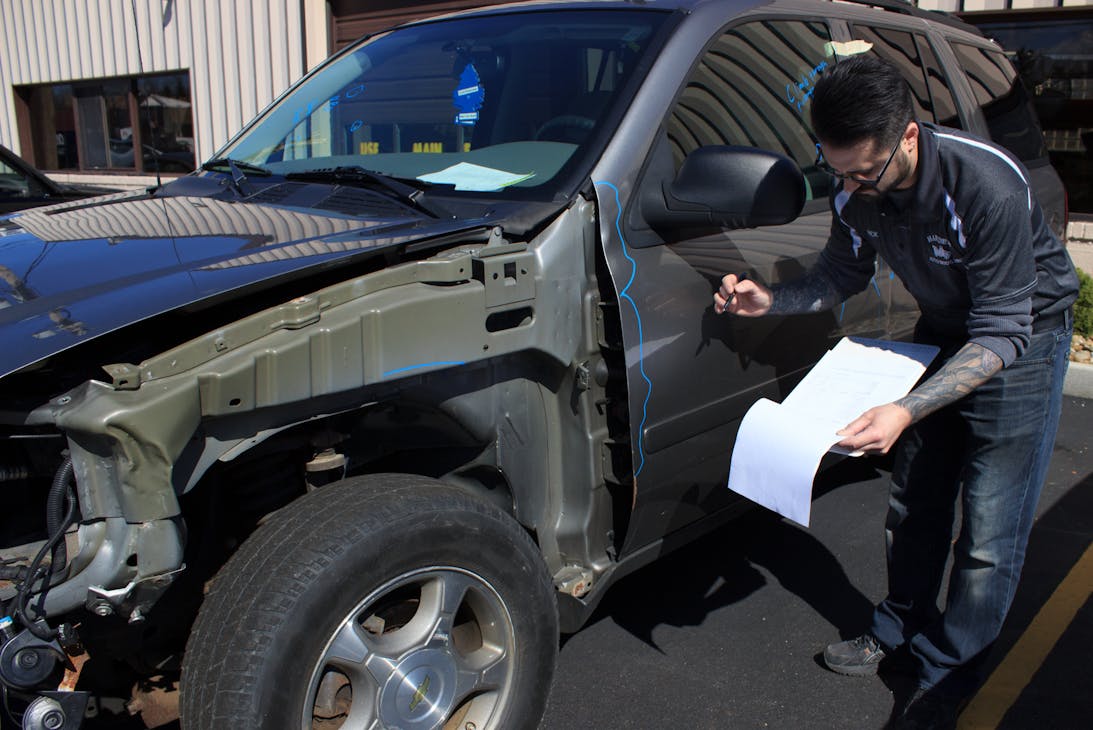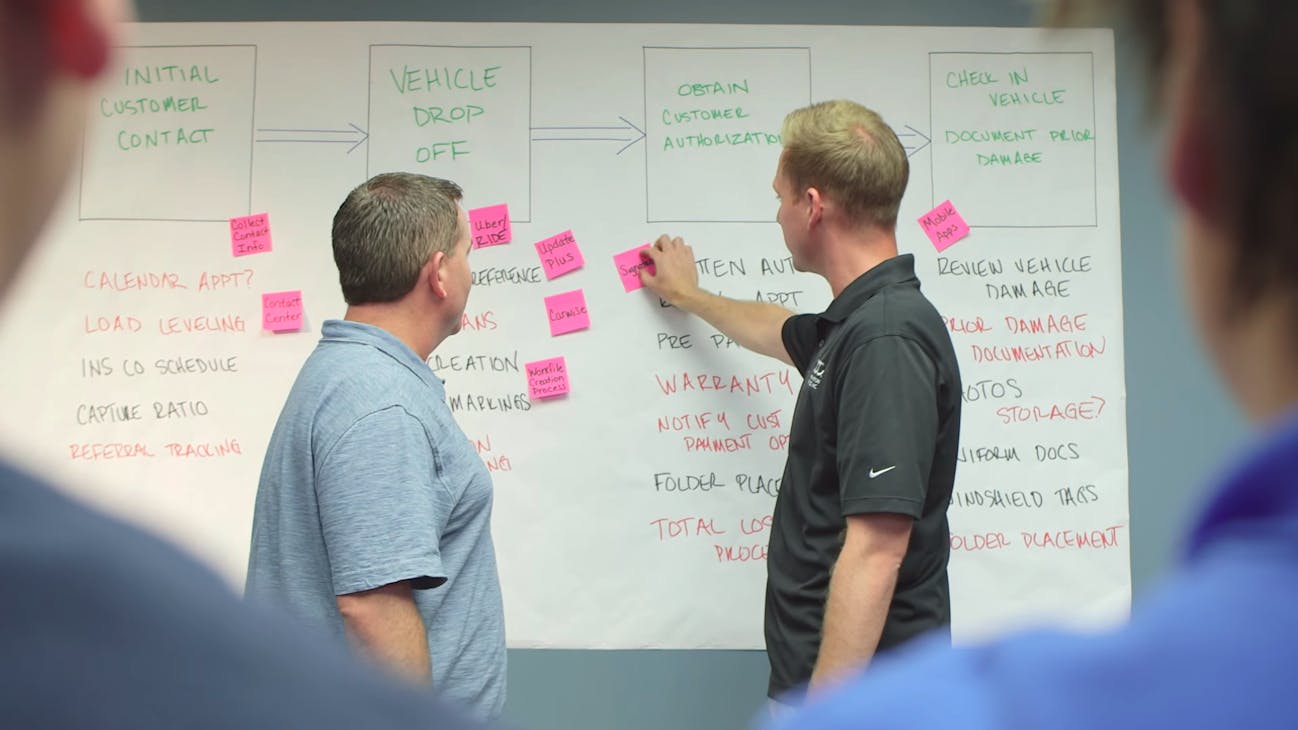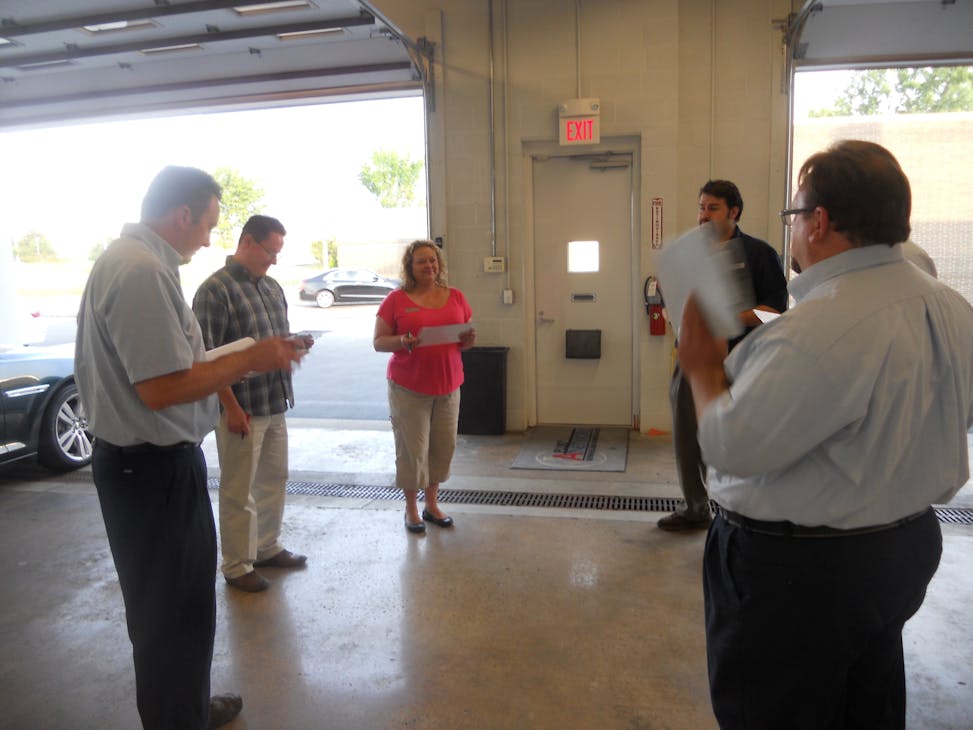Content brought to you by ABRN. To subscribe click here.
What you will learn:
• “Lean processes” means to reduce costs and minimize cycle time
• “Blueprinting” means to establish a standard operating procedure to discover hidden damage, before repair begins
• Blueprinting leads to fewer mistakes, better efficiency, and more revenue
Lean processing and blueprinting have an interesting relationship that goes well beyond how the two concepts tie into one another. The evolution of their meanings provides a telling look at collision repairs, one that you should know as you look for ways to better execute your own blueprinting processes.
Lean processing has been a buzzword in the industry for 20 years, beginning when shops turned to Japanese kaizen methodology to squeeze additional revenue out of their shops. Since they couldn’t push insurers to budge on how much they were willing to pay for labor and parts, repairers began streamlining their operations, cutting waste wherever possible to build lean processes that would reduce costs and cycle times, pulling more money from every job and creating time to add more throughput. Shops began implementing a number of lean models.
While some repairers would go all in on creating a lean process that was lean from start to finish, others would implement a limited number of lean initiatives. Ultimately, regardless of their investment in “going lean,” shops with all levels of lean operations began calling themselves lean. There were tremendous differences in the amount of waste cut from one lean shop to another.
A similar process has occurred with blueprinting. According to I-CAR, “Blueprinting means different things to different people, but blueprinting really is establishing a standard operating procedure (SOP) that allows for the discovery of all the damages before repairs begin.”
I-CAR says the point of blueprinting is discovering what once would have been hidden damage before the actual repairs begin, thereby building accuracy and efficiency and eliminating costly oversights.
As with lean processing, shops can differ widely in how they define and perform blueprinting. Some stay close to I-CAR’s intentions and do a full teardown of vehicle areas damaged or potentially damaged in a collision. Others focus only on areas of significant damage.
Still, other shops do only limited teardowns, typically believing the extra time and attention given to blueprinting is not rewarded with significant revenue. These repairers don’t see any losses in efficiency or increases in cycle time that more extensive blueprinting would remedy.
Those losses and increases are still there, says former shop owner and current consultant Mark Erenbright. He says better blueprinting and estimating are the foundations to better business and rebuilding the foundations to both is key to fewer mistakes, increased efficiency and more revenue..
Step 1: Build a blueprinting culture
Erenbright says shops taking this journey should start by understanding the relationship between blueprinting and estimating. He reminds shops that the estimate is the external business document intended for customers and insurers.
“It’s an appraisal,” he says. “Don’t get me wrong; it needs special attention and should be accurate as possible, so the people looking at it aren’t surprised later.”
Blueprinting, meanwhile, is the internal document, the action for thoroughly repairing, painting and preparing the vehicle for delivery to the customer.
More than that, the blueprint is the document that ties all parts of the shop together, says Erenbright. As such, he says shops need to put in place a culture where everyone accepts a part in creating and following the blueprint–estimators, blueprinting person or team, techs and painters.
I-CAR reinforced this notion years ago in its article, “Necessary Culture Changes For The Blueprinting Process.” That piece noted, “The blueprinting process requires a culture change throughout the repair facility. It also requires input from the entire team, not just management, to be successful.”
Tom Sebert, owner of Sunset Full Service Auto, in Raleigh, N.C., attests to the importance of receiving buy-in from a shop’s full staff to ensure its blueprinting process is successful.
“We tried originally to use blueprinting in 2013, and it was a complete disaster; we were worse off than ever because folks complained as much as they worked,” he says.
His shop abandoned blueprinting but returned to it in 2015 when one of its DRPs threatened to drop them because of lagging cycle times and reworks.
Previously, he tried to institute a blueprinting process a colleague in an Arizona shop suggested to him. This time, Sebert brought his entire staff together, explained the basics around how blueprinting would be conducted at the shop, and took input from every employee of how each thought the process should work.
“We worked together to build the process we use today Because no one felt he was being forced to work in an unfamiliar way and had some say in the process, the staff eagerly adopted it,” Sebert says.
There were some challenges the shop had to address, namely changes in the order of work, but his staff pushed through them because it was important to them that the process be a success.
Step 2: Design your blueprinting model
Within the discussions Sebert had with his staff was the outline of how his blueprinting process would be conducted. Here again, getting to the basis of blueprinting was the guiding factor. Sebert told his staff to think to look at the vehicle holistically, working from the simple to the complex and then in one organized motion from the front of the vehicle to the rear.
That translates into opening and closing all doors and the trunk to ensure they operate correctly and also performing a visual inspection of the vehicle and then recording any damage. From here, the estimate takes a central role, since the blueprinting staff will use it to track further damage. This is one of the reasons it pays to produce the best, most accurate estimate possible.
“It makes blueprinting much easier,” Sebert says.
You’ll also want to run your diagnostics, which may already have been performed as part of the estimate. Then, move in an orderly fashion from the front of the vehicle to the rear disassembling repair areas to look for further damage and noting it as such.
Once again, a good estimate is important here since you’ll want a complete understanding of manufacturer repairs to know exactly what work will need to be performed to repair the vehicle.
“It you don’t understand the work, how can you possibly blueprint it?” Erenbright asks.
Already having that information in the estimate saves time.
Further, Sebert says putting the vehicle up on a lift and checking the underside is also vital.
“If you’re going to blueprint, you have to blueprint everything. A house’s blueprints don’t leave out entire rooms and the basement,” Sebert says. “A lot of things get knocked loose during a collision, and you don’t want to be searching for the cause of an odd noise or vehicle performance problem at the end while you’re test-driving it. Always check the tires, suspension, exhaust system, and anything that might be hanging from the bottom.”
Step 3: Create your SOPs
When creating your blueprinting process, you’ll need to document how each step is conducted and when since you want to create a guide that helps you repair every vehicle in your shop consistently. This is work that will require input and some review by every member of your staff.
The challenge here is putting all of that into writing, a task many shops might find daunting. Writing clearly isn’t easy. Organizing information isn’t easy. Rolling all of this together in a form that’s easy to read is even more difficult.
If you’re not comfortable doing this work, hire someone from the outside to do it for you. Talk to hiring firms about bringing in an experienced technical writer who can take care of this work. Erenbright says finding someone with some automotive experience is extremely important, as is working closely with your writer, so you can later update and edit this work as your blueprinting process evolves.
Step 4: Seek outside guidance
The technical writer certainly isn’t the only external source you should leverage. Sebert and Erenbright both say expert guidance can be the difference between a transformative blueprinting process and one that provides only modest results or is later abandoned.
“You need to implement a change like this with a sure, experienced hand, or you’re going to find yourself working in circles hoping your next step takes your shop in the right directions,” Erenbright says.
Help can come from your paint company and information providers, along with I-CAR and professional consultants. Additional help can be found on the internet, where some of the brightest stars of the collision repair industry hold court.
Sebert says turning to his paint vendor for assistance from start to finish guaranteed his shop would build a credible blueprint process with success that would be felt across his operation. He notes that the expert help had two other benefits:
- Having help from an experienced guide who could point to other shops that turned around their fortunes helped convince his staff of the value of blueprinting.
- It opened the door to tweaking his processes by looking to other sources who shared their ideas.
“This is a path you start down and never get off,” says Sebert. “We found that it kept everyone invested in our shop and looking for ideas, they could share to our blueprinting even better.”
Step 5: Audit your work
External help can offer one other service — helping you crunch shop numbers to show the results of blueprinting. By looking at your pre-blueprinting KPIs (or pre- and post-change numbers for those of you looking to upgrade existing blueprinting strategies) and those collected afterwards, you can drive home to your staff the effect of this process and involve them in its refinement.
“Your numbers also will suggest where you can make improvements, so you can go back to your ‘lab’ and make changes,” Erenbright says.
He suggests shops particularly look at cycle time, severity and the average repair dollars per repair order (RO) and compare those to previous numbers. From there, he says it’s imperative that management and staff compare their experiences before and after implementing blueprinting. Doing so helps work out any areas or issues hindering the process. This also is a good time to address how well your employees are communicating and fix that as well.
In time, you should end up with a true-blue blueprinting operation that evolves as your business does. Though many details are involved in its development, Erenbright says those complexities ultimately make your shop’s job easier. Any actions that make your work easier and more profitable are well worth it.
This article is care of Vehicle service pros, this article can be found here





